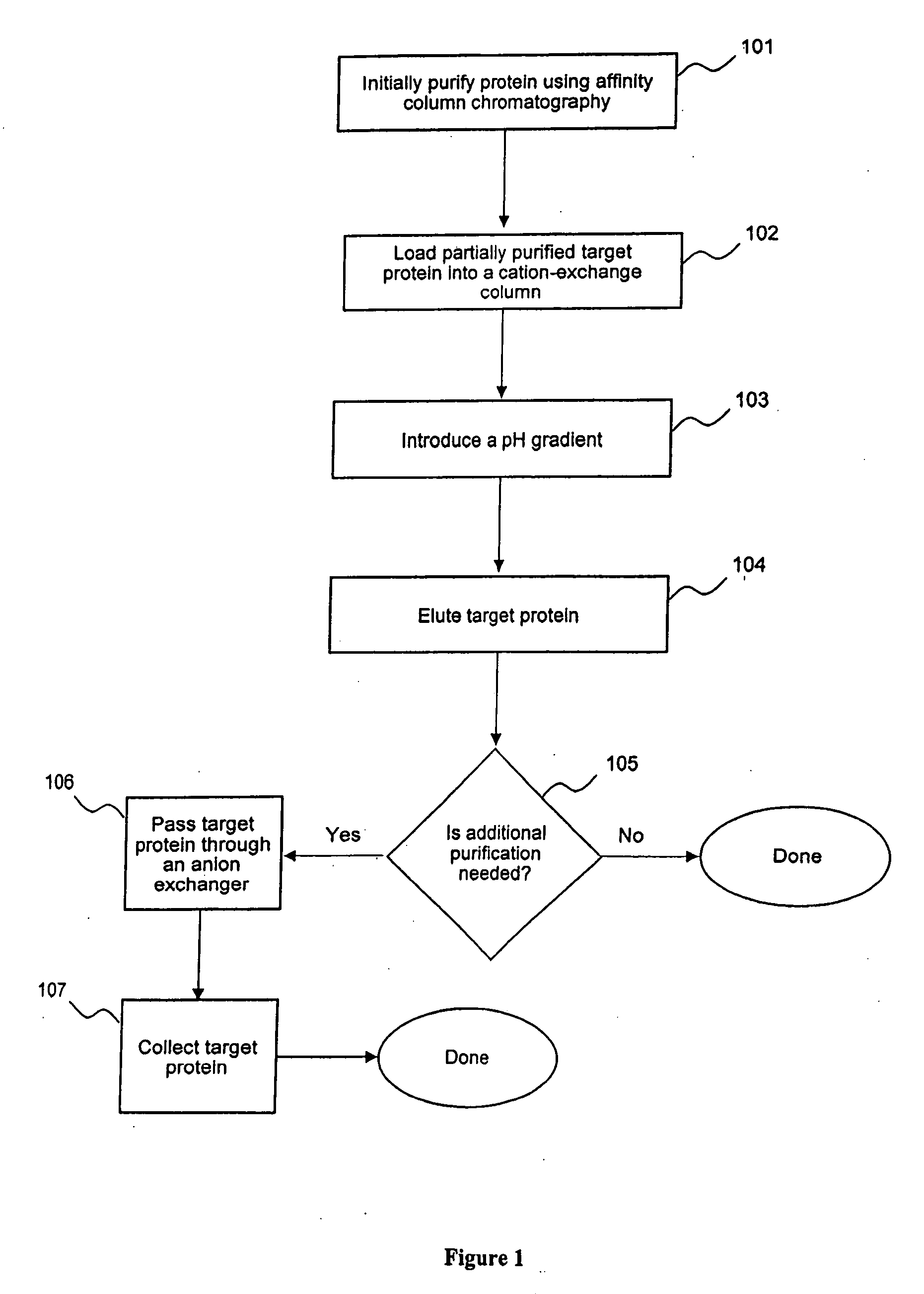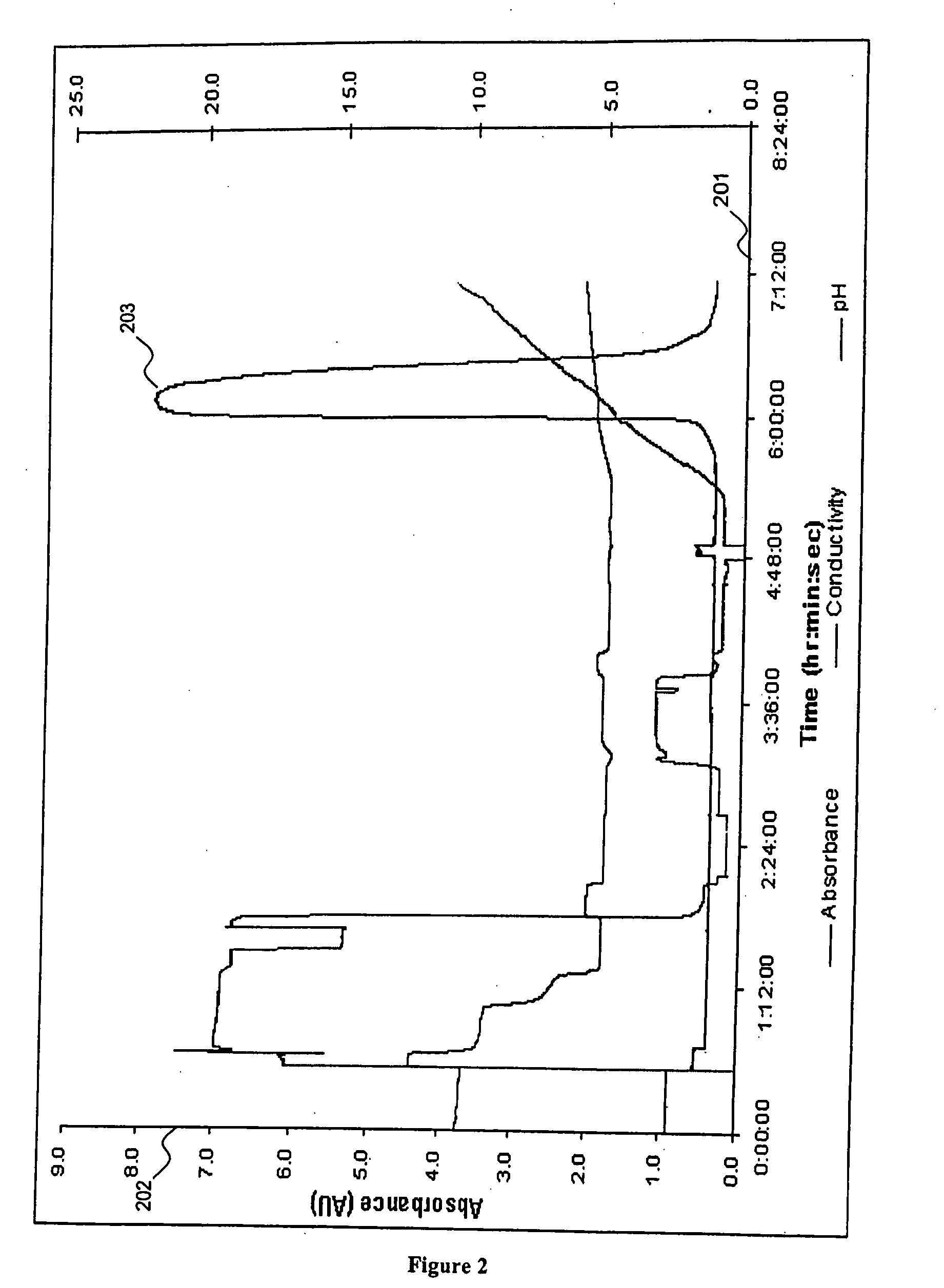Polishing steps used in multi-step protein purification processes
a protein purification and multi-step technology, applied in the field of protein purification, can solve the problems of difficult to efficiently prepare an eluate containing a target molecule for subsequent polishing steps, unsuitable eluate for a next polishing step, and frequent encounter of problems
- Summary
- Abstract
- Description
- Claims
- Application Information
AI Technical Summary
Benefits of technology
Problems solved by technology
Method used
Image
Examples
example 1
[0028] In order to determine whether elution of a target protein from a cation-exchange chromatography column using a buffer with a time-dependent pH gradient is effective in a polishing step of a commercial purification process, a chromatography column with a diameter of 30 cm and a height of 26.5 cm was prepared using a Fractogel COO− chromatography resin. The calculated binding capacity of the chromatography column was 42.7 g / L and the eluate pool volume loaded onto the Fractogel chromatography column was 4.22 column volumes. An eluate from a protein-A affinity chromatography column containing an antibody target molecule was loaded onto the Fractogel chromatography column and eluted by use of buffer with a linear, time-dependent pH gradient. FIG. 2 illustrates a protein-concentration-versus-time plot of a target protein eluted from a cation-exchange chromatography column. Eluted protein concentration was calculated by measuring UV light absorbance at 280 nm. In FIG. 2, the x-axis...
example 2
[0029] In order to compare the effectiveness of a Q membrane and a Q chromatography column used as anion exchangers following sequential column-chromatography-based purification steps used to purify a target protein, duplicate samples of a target protein eluate were prepared by collecting target-protein-containing eluate from a cation-exchange chromatography column used in a second purification step following an initial affinity chromatography step. Following elution from the cation-exchange chromatography column, the pH of the eluent pool was about 5.5 and the conductivity was between 6.7 and 6.8 mS / cm. The cation-exchange chromatography column eluant was adjusted to a pH of about 7.2 with Tris base. As shown in Table 1, the Sartobind Q membrane displayed several advantages over a chromatography column prepared with Q Sepharose Fast Flow chromatography resin, referred to as the “Q column,” at pH 7.2. For example, the Q membrane permitted a faster flow rate, provided a higher capaci...
PUM
| Property | Measurement | Unit |
|---|---|---|
| conductivity | aaaaa | aaaaa |
| pH | aaaaa | aaaaa |
| pH | aaaaa | aaaaa |
Abstract
Description
Claims
Application Information
 Login to View More
Login to View More - R&D
- Intellectual Property
- Life Sciences
- Materials
- Tech Scout
- Unparalleled Data Quality
- Higher Quality Content
- 60% Fewer Hallucinations
Browse by: Latest US Patents, China's latest patents, Technical Efficacy Thesaurus, Application Domain, Technology Topic, Popular Technical Reports.
© 2025 PatSnap. All rights reserved.Legal|Privacy policy|Modern Slavery Act Transparency Statement|Sitemap|About US| Contact US: help@patsnap.com


